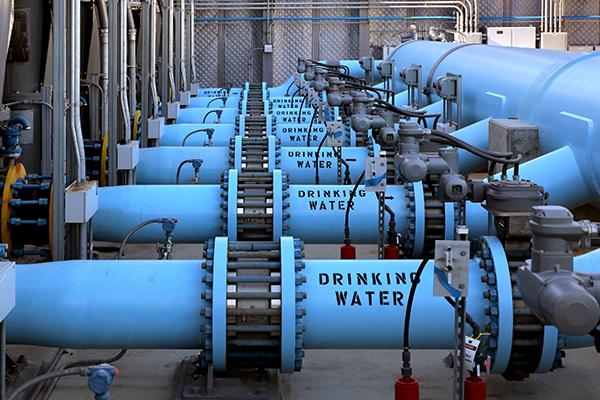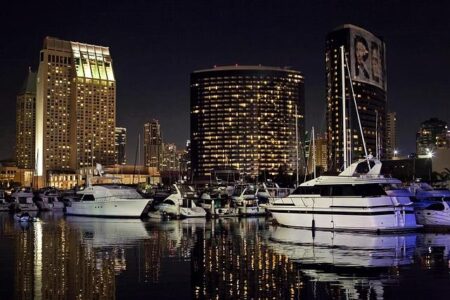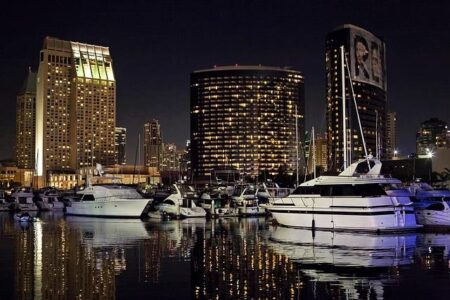San DiegoŌĆÖs Desalination Initiative: A Model for Drought Resilience with Broader Challenges
San DiegoŌĆÖs Strategic Use of Desalination to Combat Water Scarcity
In response to CaliforniaŌĆÖs persistent drought conditions, San Diego has taken a pioneering step by investing heavily in seawater desalination technology. Since its inauguration in 2015, the Carlsbad Desalination Plant has been converting ocean water into safe drinking water, supplying roughly 10% of the countyŌĆÖs daily consumption. This initiative has significantly bolstered the regionŌĆÖs water security by lessening reliance on imported water and overdrawn groundwater reserves, which have historically been vulnerable during dry periods.
Despite this success, experts emphasize that duplicating San DiegoŌĆÖs desalination model in other metropolitan areas is fraught with challenges. The process demands substantial energy inputs, requires massive upfront capital, and must navigate complex environmental regulations. Below are some of the primary obstacles cities face when considering desalination:
- High energy requirements that increase greenhouse gas emissions
- Expensive construction and ongoing operational costs
- Strict environmental permitting and marine ecosystem protection
- Public resistance fueled by ecological concerns
- Preference for alternative water-saving measures like conservation and recycling
| City | Desalination Status | Annual Capacity (MGD) | Primary Challenge |
|---|---|---|---|
| San Diego | Operational | 50 | Energy expenses |
| Los Angeles | Planning Stage | 100 (Projected) | Environmental approvals |
| Miami | Inactive | 0 | Funding and community opposition |
| Houston | No current plans | 0 | Alternative water sources |
Why Desalination IsnŌĆÖt a One-Size-Fits-All Solution for Urban Water Shortages
While San DiegoŌĆÖs desalination plant has proven effective locally, scaling this technology across other U.S. cities remains problematic. The process is notably energy-intensive, often dependent on fossil fuels, which conflicts with many municipalitiesŌĆÖ commitments to reducing carbon footprints. Additionally, the enormous capital investmentŌĆöoften reaching billions of dollarsŌĆömakes desalination financially inaccessible for many regions lacking substantial government subsidies or private funding.
Environmental concerns also loom large, particularly regarding the management of brine, the highly saline byproduct of desalination. Improper disposal can damage marine habitats, leading to opposition from environmental advocates and local communities. Key challenges for urban desalination projects include:
- Elevated operational costs translating to higher water prices for consumers
- Energy demands that clash with renewable energy goals
- Ecological risks from brine discharge affecting coastal biodiversity
- Complex infrastructure needs requiring specialized engineering and maintenance
| Aspect | San Diego | Other U.S. Cities |
|---|---|---|
| Energy Source | Primarily natural gas with partial offsets | Varies; often coal or less renewable sources |
| Financial Support | State and federal grants | Limited or uncertain funding |
| Brine Disposal | Advanced ocean diffusion techniques | Often limited or controversial methods |
| Public Perception | Generally favorable post-drought | Mixed, frequently skeptical |
Environmental and Financial Barriers to Expanding Desalination
Despite its potential, desalination faces significant environmental and economic constraints that hinder widespread adoption. The processŌĆÖs heavy reliance on energyŌĆöpredominantly from fossil fuelsŌĆöcontributes to increased carbon emissions, undermining climate action efforts. Furthermore, the disposal of brine, if not carefully managed, threatens marine ecosystems by increasing salinity and introducing chemicals harmful to aquatic life.
From a financial perspective, the initial investment for desalination infrastructure can exceed $1 billion, a prohibitive figure for many municipalities. Operating expenses remain high due to energy consumption and maintenance demands, often surpassing those of conventional water sources. The table below compares costs and environmental impacts of common water supply methods:
| Water Source | Initial Investment | Operating Costs | Environmental Impact |
|---|---|---|---|
| Desalination | Very High ($1B+) | High | Energy-intensive; brine disposal concerns |
| Surface Water | Moderate | Low | Potential ecosystem disruption |
| Groundwater | Low | Low | Risk of aquifer depletion |
- Energy Dependence: Reliance on fossil fuels limits environmental sustainability.
- Financial Constraints: High costs restrict access for many cities.
- Ecological Threats: Brine discharge can degrade marine habitats.
Integrating Diverse Water Management Strategies for Urban Sustainability
Although San DiegoŌĆÖs desalination project offers valuable insights, experts agree that no single technology can fully address urban water scarcity. The high operational costs, environmental challenges, and energy demands of desalination necessitate a more comprehensive approach. Cities are increasingly turning to integrated water management solutions that combine multiple methods to enhance resilience and sustainability.
Emerging and effective strategies include:
- Capturing and storing rainwater to supplement supply and reduce runoff
- Implementing advanced wastewater treatment and reuse systems
- Deploying smart water infrastructure for real-time consumption monitoring and leak detection
- Designing urban landscapes with permeable surfaces to improve groundwater recharge
By adopting these diversified tactics, cities can reduce their dependence on energy-heavy desalination plants and build more adaptive water systems capable of withstanding climate variability.
| Alternative Approach | Primary Advantage | Potential Limitation |
|---|---|---|
| Rainwater Harvesting | Mitigates stormwater runoff and supplements supply | Seasonal and regional variability |
| Wastewater Recycling | Maximizes water reuse and reduces demand | Requires advanced treatment infrastructure |
| Smart Water Monitoring | Enhances efficiency and reduces waste | Initial setup costs and technology adoption |
| Green Urban Design | Improves groundwater recharge and urban cooling | Limited space in densely populated areas |
Looking Ahead: Balancing Innovation and Sustainability in Water Management
San DiegoŌĆÖs experience underscores the potential of desalination as a critical component in drought-prone regionsŌĆÖ water portfolios. Nevertheless, the technologyŌĆÖs high costs, environmental implications, and site-specific advantages mean it cannot serve as a universal remedy for urban water shortages. Moving forward, policymakers and water managers must prioritize a balanced mix of innovative and traditional water solutions tailored to local environmental, economic, and social contexts. This multifaceted approach will be essential to securing reliable, sustainable water supplies amid growing climate challenges.







